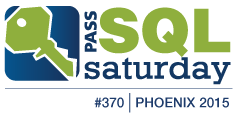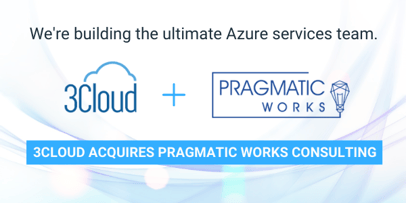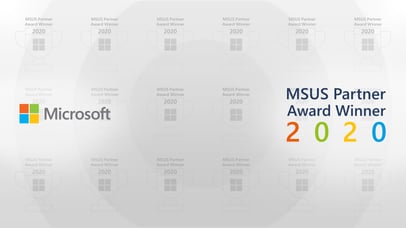
SQLSaturday Phoenix will be held Saturday, February 28, 2015 at The Black Canyon Conference Center in Phoenix, Arizona. Admittance is free but there is a $10 lunch fee.
Precons will be held Friday, February 27, 2015 at the Microsoft office in Tempe, Arizona.
Seven of Pragmatic Works' consultants will be presenting at SQLSaturday Phoenix. Below is a list of their sessions and you can can receive more information about each one by clicking on the title.
Precon Sessions-Friday, February 27, 2015
Adam Jorgensen- Architecting the Modern Data Warehouse
Today's modern data warehouse is more than facts and measures, but the ability to empower users with data and to build analytics solutions that predict future outcomes. We'll examine the problems and solutions facing the modern data warehouse. We'll look at how to balance data loading and computing processes with the needs for the platform. Looking at how to work with both structured and unstructured data and when to continue to leverage relational databases versus file-base solutions, such as Hadoop. From on-premise to appliance to cloud solutions, this session will examine how to select the right fit for the right solution. We’ll also discuss how to augment these solutions with Big Data and Cloud technologies including automating those (and giving you the scripts to do so) and adding common analytic data sources such as social media.By the end of the day, you will understand what is possible in the modern data warehouse and how to architect solutions fitting your company.
Bradley Ball- SQL Internal Deep Drive
Congratulations you’re a SQL Server DBA/Developer/BI Developer. How does SQL Server work? We have tables, views, and indexes. We write queries. How do the queries and the tables work together? Have you ever wondered? Why should you? Understanding how SQL Server works internally allows you to know how and when to use SQL Server to solve business problems. We need to understand the relational engine, index, transaction log, data, and locking internals. We need to know how these apply to business decisions that we make every day! Most importantly we need DEMOS!!! Join SQL Server MVP Bradley Ball as we dive into the SQL Server Internals spanning from the Query Processor, through the Storage Engine, the Plan Cache and in between.
SQLSaturday Phoenix Sessions-Saturday, February 28, 2015
Adam Jorgensen- On-Demand Compute & Analytics with PowerShell, Hadoop & Azure
This session will take the beginner in big data and show them how to use powershell, HDinsight and Microsoft's Azure platform to enable on demand analytic and compute. These capabilities are critical in the modern data warehouse environment and can only be delivered by technologies working together to create an analytic fabric that the organization can use. From developers the analysts and operations folks, this session will have something for all of you.
Bradley Ball- BI DBA Performance Tuning
Data Warehouses and OLTP systems are different! But there are some core concepts that we need to understand for managing and maintaining both. Do you want to know how you can load data faster, just by setting up your database correctly? Are your queries running slow? Want to understand how you can reduce locking and blocking in reporting queries? Do you have a system with views, that reference views, which reference more views? Let's discuss some core concepts and techniques that will get you out of the slow lane and on your way to a faster Data Warehouse!
Alan Faulkner- SSAS Multidimensional vs. SSAS Tabular-Which One Do I Use?
With the release of SQL Server 2012, we were introduced to two possible options when it came to Analysis Services. This ultimately presented a question…”Which one do I use SSAS multidimensional or SSAS tabular”? Determining whether multidimensional or tabular is the optimum solution for your organization is a key step when working with SQL Server Analysis Services 2012/2014. This session will introduce you to some of the common pitfalls with each solution and how you can avoid them. By the end of this session, you’ll have a clearer understanding of the strengths and weakness of each model and how your organization can optimally leverage the strengths of SSAS 2012/2014.
Ginger Grant- Predicting the Future with Machine Learning
Machine Learning is Microsoft’s big entry in to the predictive analytics arena. Instead of staring into crystal balls, Machine Learning analyzes the data to determine if past performance is indicative of the future. In this introductory session we will discuss the growing new field of data predictive analytics and now Machine Learning is used to analyze cloud data.
Jason Horner- Dimensional Modeling Design Patterns: Beyond Basics
This session will provide a deeper dive into the art of dimensional modeling. We will look at the different types of fact tables and dimension tables, how and when to use them. We will also some approaches to creating rich hierarchies that make reporting a snap. This session promises to be very interactive and engaging, bring your toughest Dimensional Modeling quandaries.
Josh Luedeman: Data Factory: Data Integration in the Cloud
The Azure platform is ever changing. Today is no different. Azure has released a new tool called Data Factory. It is a cloud PaaS that is SSIS in the cloud. Are you curious what all it entails and if you can use it? In this session, we'll go over the basics of Data Factory like structure, billing, and building blocks. We'll go over a couple instances on how you can use Data Factory in current processes that you have in your data warehouse ETL.
Roger Wolter- SQL Server File System
As part of the SQL Server OS, SQL Server has its own file system built on top of the Windows NTFS. Understanding how the SQL Server filesystem works and how it interacts with NTFS and storage is critical to SQL Server performance. This presentation will start with a brief review of NTFS and then go into depth on the SQL Server filesystem. It should help you understand: • Why is fragmentation bad for performance? • Why should I allocate more than one file in a filegroup? • Why should I not rely on autogrow to size my SQL files? • Why is autoshrink a very bad thing? • What should my NTFS allocation unit size be set to? • How many files should tempdb have? All this and more!
Plan on attending SQLSaturday Phoenix? Tweet and let us know! @PragmaticWorks
Sign-up now and get instant access
ABOUT THE AUTHOR
Free Community Plan
On-demand learning
Most Recent
private training








-1.png)
Leave a comment